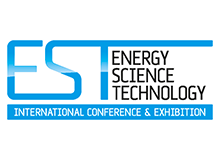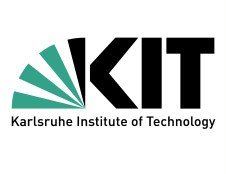Energy Efficiency
The success of a sustainable future energy system highly depends on the means, by which energy is converted, distributed and used.
To achieve a stable reduction of energy consumption and thereby effectively avoid greenhouse gas emissions the efficiency throughout the whole energy system has to be improved. Whatever the future share of renewable energy sources in the total energy production of a country will be like, the use of conventional fuels will remain and have to be implemented as efficient as possible to achieve the maximum yield out of them.
Applications like cogeneration (or polygeneration), fuel cells or electric engines provide much higher efficiency levels than traditional ones and reduce the unused waste energy. Efficiency does not only concern energy production, but spreads widely across all sectors of consumers like buildings, transportation and mobility, heating, cooling, lighting, industry processes and household electronics and appliances.
Finally, the efficiency of the whole energy system cannot be discussed without regarding the infrastructure, which includes systems, storage and grids .
Fossil fuel plants
For utilizing the maximum energy in available fossil fuels, the efficiency of coal, gas and oil powered supply units and power plants has to be increased. Combined heat and power (CHP, cogeneration) plants are one possibility to make use of the occurring heat from the electricity production process by engines and to thereby reduce greenhouse gas emissions. Closely linked to efficiency of fossil fuel power plants is their flexibility, their ability to adapt to fluctuating demands in an energy system.
Nuclear power plants
In 2011 the technology of nuclear fission was used to generate 10% of the world’s electricity demand. Whereas some countries on the one hand try to cut down or abandon the electricity production from nuclear resources – especially after the Fukushima nuclear disaster – others regard nuclear power as an important pillar of their future energy system. For the latter countries new technologies, advances in planning and construction, efficient operation and hazard and risk management are of interest. For the other countries, demolition concepts and technologies are rather in the focus. But the central topic for all stakeholders is the intermediate and final storage of the incurring radioactive waste.
At the EST 2015 we would like to stimulate an open discussion about all those relevant aspects, which concern the field of nuclear power.
Fusion power
The fusion process uses nuclear power in the opposite direction: instead of fission it fuses two nuclei. Since more than 50 years mankind is trying to copy the process, which makes our sun produce energy, and generate electricity from it. What are promising approaches, which technologies and materials are used, what are the safety and environmental issues? We would like to invite researchers to present the recent developments and findings in the fusion power sector.
Energy efficient buildings and districts
Buildings account for about 40% of the global energy consumption. Therefore it is essential to increase their efficiency, meaning the reduction of their energy demand (throughout the whole life-cycle) on one hand and the enhancement of building-related energy-supply. Integral planning concepts and complex simulation tools support the procedure already during the design stage, new building materials (like PCM), innovative components (like building automation, heat pumps) and passive means (like natural cooling/ventilation) reduce the energy demand. Current keywords are “smart home”, “energy producing house”, “smart city”, “nearly-zero energy buildings (NZEB)” and “zero emission districts”, which all express the ambitious goals of reducing the energy demand of buildings towards zero or even turning them into energy producing “units”. However, the reduction of energy demand should not be borne by the user’s comfort and living quality. Therefore the EST 2015 welcomes you to present sustainable energy solutions related to buildings, districts and cities.
Efficiency in cooling and heating
A large amount of energy is nowadays used for conditioning (heating or cooling) purposes of rooms (buildings, vehicles) and there often humidification and dehumidification are as well included. But cooling and heating is not only an issue in those room-related sectors, it includes industry processes in general and the food industry in particular. Existing technologies like absorption or adsorption cooling gain popularity due to climate protection reasons and make cooling by heat (e.g. solar cooling) possible. Traditional cooling devices like compression chillers become permanently more efficient by applying innovative materials and new technologies. Condensing boilers and waste-heat recycling make heating processes more efficient. Last but not least, intelligent control systems (e.g. single-room control or energy management software in district heating networks) increase the total efficiency of cooling and heating systems.
Low-energy consumer electronics / electrical appliances
Due to the high value of electricity and a rising amount of household electronics this field needs to be put to a focus as well, if the efficiency in the building sector should be increased and the electricity consumption should be lowered. With an increasing economic wealth the application of household appliances (refrigerator, washing machine, dishwasher ...) rises and reaches its peak probably at the installation of modern consumer electronics (TV, HiFi, computers, Internet). In the tertiary sector it is the equipment of the workplace and the equipment of an increasing number of buildings with complex automation systems, which causes a rising electricity demand. Servers on a small scale (single companies, single buildings) and on a large scale (server farms, data centres, “cloud” farms) consume a large amount of energy. We are interested in energy labels and their benefits, in “green IT” concepts and what they account for, in energy-efficient computers and virtualization and in innovative low-energy appliances.
Optimization of transportation and mobility
The transport sector consumes about 30% of the world’s final energy demand and about 95% of this consumption base on fossil resources. Whereas there might be stagnation in some developed countries it is especially the developing countries, which will have an increasing amount of (auto)mobility. We need concepts for increasing the efficiency of necessary transportation and mobility and we have to reduce the avoidable traffic. We have to shift individual traffic to public transport, we have to turn short distance motorized traffic into low-carbon mobility (walking, cycling, e-mobility).
The EST 2015 would like you to present innovative mobility concepts and new technologies for optimization of transportation. What is the reachable efficiency potential in this sector? Which role can navigation and ICT play in the future traffic?
Efficient use of fuels in transport and mobility
Regarding the high share of transportation and mobility in the world’s energy consumption and the high share of fossil fuels in this sector, the use of these valuable resources has to become as efficient as possible. The CO2-emissions have to be reduced by making engines more efficient, constructing the vehicles lighter (by new material technology) and enhancing traffic strategies.
Efficiency in lighting
The efficiency of traditional light bulbs is really low: only about 5% of the energy were used for the actual purpose of lighting, the remaining 95% were turned into heat. First-generation energy saving lamps were fluorescent lamps and could increase the efficiency already by factor of about 5. Further development of those lamps provided more comfortable colour temperatures, further reduced heat losses and longer lifetimes. In the meantime LED (light-emitting diodes) lamps are becoming widely used in automobile industry, lighting engineering and slowly in households. Current research examines transparent materials for LED and OLED technologies for surface lighting (e.g. lighting walls or windows).
In the public outdoor lighting sector the evolution is alike: HBO-lamps (High-pressure Mercury-vapor lamps) were followed by HPS (High-pressure sodium) lamps and HID (high intensity discharge) lamps and now state-of-the-art lighting is LED.
The EST 2015 is interested in the latest findings and innovative technologies in solid-state lighting and also would like to present lighting operation concepts (in buildings, for roads and pathways and whole districts).
Energy efficient magnetic materials
Advanced magnetic materials are used for data storage, power generators and engines of (hybrid) electric vehicles. Today’s research aims to optimise permanent magnets and searches for highly spin polarized ferromagnetic materials. Magnetic materials play an important role in the whole field of energy and include soft magnet, magnetocaloric materials and hard magnets. Nano-structured materials open up new perspectives.
The current development of magnet research can help to improve the efficiency in many fields of application: power generation, electricity conversion and transportation.
Fuel cells
Compared to traditional fossil fuel engines fuel cells have a much higher efficiency and there are pilot applications in portable power systems (for devices like laptops, mobile phones) and transport (fuel cell electric vehicles = FCEVs).
Do fuel cells have a chance for mass-market application? What are possible types of fuels and how can they be produced in an economic and ecological way? What are current trends in materials and concepts for the construction of fuel cells?
Thermoelectrics
The thermoelectric effect is the direct conversion of temperature differences to electric voltage and vice versa. All materials show this effect, but usually it is too small to be used for applications. The development of efficient and low-cost materials with a significant thermoelectric effect could enable applications like power generation and refrigeration in the future.
Demand-side strategies to reduce energy needs
Demand-side strategies can both support the reduction of energy consumption and help to increase the efficiency within an energy system. They can be based on technical measures like the demand-side-management or demand-supply-management by intelligent computer systems (IT), on social measures like influencing the operator’s or user’s behaviour by guidance or training and a combination of both like incentives for using energy at a different time of the day (dynamic prizing, time-of-use TOU tariffs).
Efficient industry and manufacturing processes
There is a large potential in saving energy at industrial and manufacturing processes by increasing their efficiency. Due to rising energy costs, a stronger focus of industry and companies on environmental issues (internal) and sometimes legal regulations (external), the optimisation of those processes gains more attention. The usage of heat-recovery, the optimisation of production chains and intense monitoring are just a few key measures, which can help to exploit the existing potentials. Interested stakeholders can learn from research and from successful pilot or demonstration projects in this field.
Other efficiency improvement in energy conversion
We are also interested in all other innovative and future-shaping efficiency measures and strategies, which might not fit into the categories above. We are keen to receiving your abstract and learn about further efficiency improvements in energy conversion or use.








